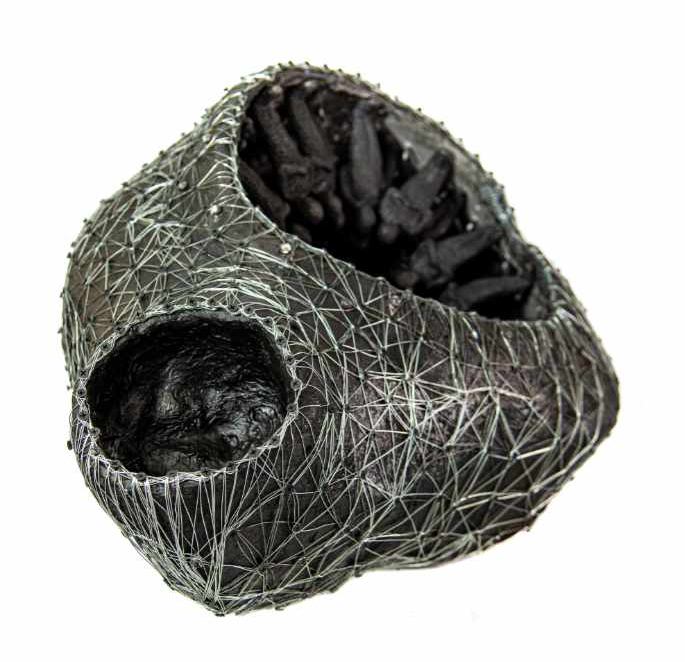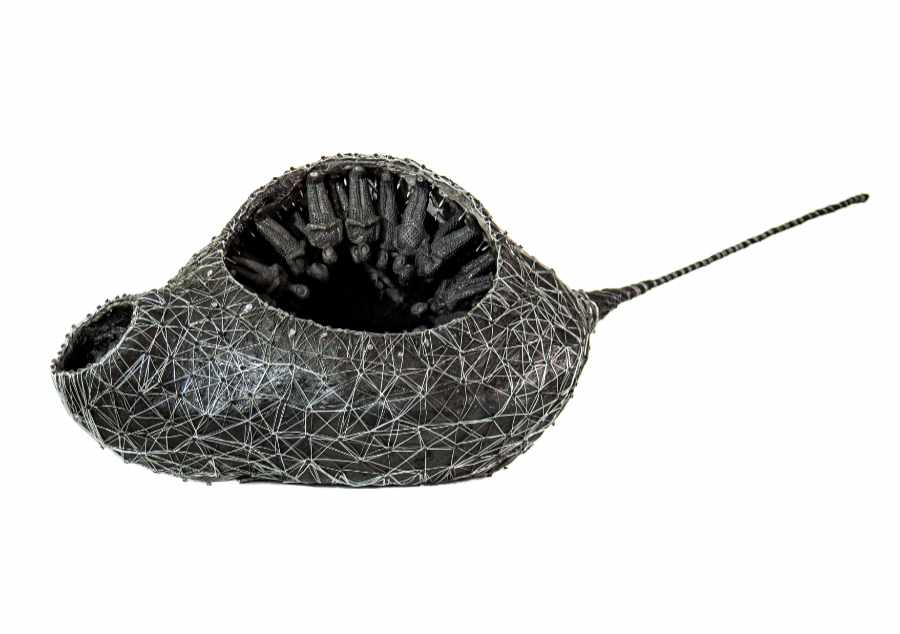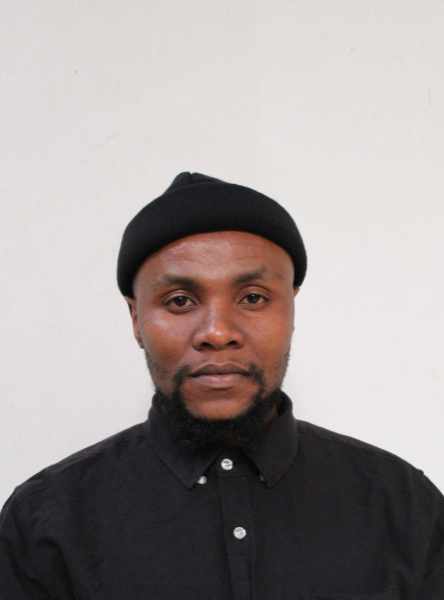
Paballo Majela: Ha Wetsi, 170 cm length x 55 cm height x 60 cm width, acrylic resin (M1), wire, nails, 2021
ARTIST’S STATEMENT
My current body of work is based on my upbringing in the mountainous setting of Qwa Qwa, my Sotho heritage, and the folklore that existed in my youth. I create sculptures and paintings reimagining the Sesotho culture into a fantasy that is inspired by tales that were once told. In visually narrating the fictional realm of The Thaba- Bosiu Guardians, I aim to archive the rich folklore history of the Basotho people within my artworks, while interrogating and documenting the contemporary existence of the black male as a subject.

Ha Wetsi
The landscape of the Qwaqwa Mountains inspires this artwork and speaks of the tribe of my forefathers—the Makholokwe clan. The clan are descendants of the Ba-Kgatla family and trace their ancestral roots back to central Congo. They were forced to move towards the south of Africa due to shortages of food and water. However, their arrival in the south of Africa wasn’t made easy because sometimes other tribes would challenge them to fight. The Makholokwe clan used a cave as their hiding place to keep them safe from their attackers. The cave was at the top of a difficult mountainous slope, making it impossible for invaders to access.

The clever nature of the Makholokwe intimidated the members of the other tribes. The tribe members blamed the Makholokwe for the disappearance of cattle and reported the issue to the white Afrikaner landlords of the Free State. The Makholokwe people were attacked by the Afrikaners, having been sold out by the king of Lesotho, Moshoeshoe, who had a relationship with white supremacy. King Moshoeshoe gave away the location of the Makholokwe and how to access the cave where the clan hid. More than 2000 Makholokwe died when the cave was bombed. King Wetsi fled to the neighbouring country of Lesotho. The rest of Makholokwe were absorbed into other tribes.

The artwork I created honours the memory of the inhumane killing of the Makholokwe clan. I recreated the cave to remember a sacred place of my ancestors.

Paballo Majela is a South African artist. Born in 1990, in Qwa Qwa, Freestate Province; he currently works and resides in Pretoria, South Africa. In 2016, he created a life size public sculpture, representing freedom fighter Duma Nokwe, which forms part of the National Heritage Monument. In 2017, became one of three artists to create a 2.5meter sculpture of Political leader Oliver Tambo, which currently stands at the Johannesburg O.R Tambo international airport. He graduated in 2018 from Tshwane University of Technology (TUT) with a Btech in Fine Arts, majoring in sculpture. Majela also works for sculpture department. His art practice specializes in sculpture and painting.
